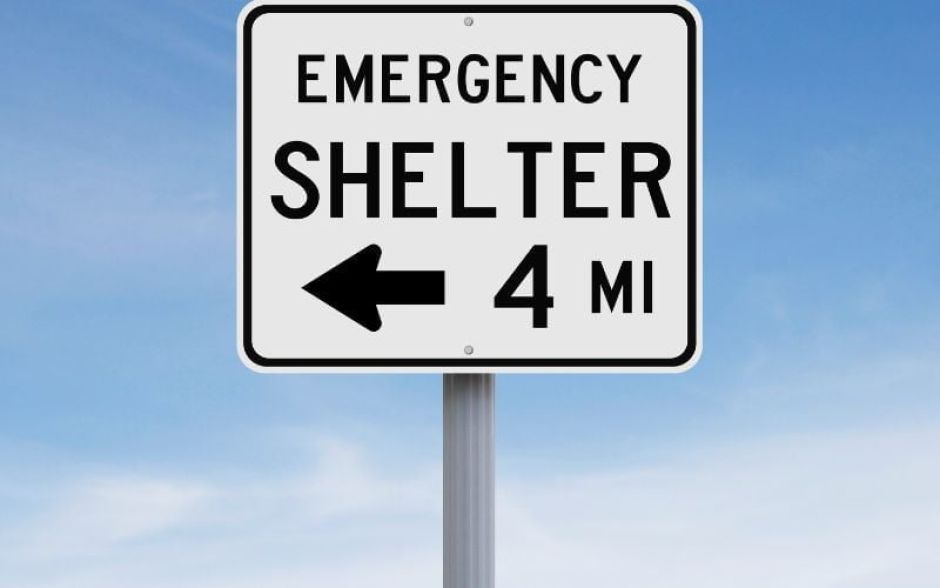
Emergency Shelters: Your Comprehensive Guide to Safety and Survival 2023
In an unpredictable world, where natural disasters, extreme weather events, and unforeseen emergencies can strike at any moment, the importance of Emergency Shelters cannot be overstated. These shelters are not just structures; they are lifelines that provide protection, security, and comfort when you need them the most. This comprehensive guide explores the world of Emergency Shelters, an indispensable sub-category of Safety & First Aid.
We will delve into the significance of emergency shelters, discuss the various types available, provide detailed insights on creating makeshift shelters in the wilderness, and offer expert advice on selecting the right shelter for your specific needs. Whether you’re an outdoor enthusiast, a survivalist, or simply someone who values preparedness, understanding emergency shelters and having the right one at your disposal is the key to safety and survival in challenging circumstances.

Table of Contents
The Significance of Emergency Shelters – Emergency Shelters
Emergency shelters play a pivotal role in ensuring the safety, well-being, and survival of individuals and communities in times of crisis. Here’s why these shelters are of paramount importance:

- Protection from the Elements: One of the primary functions of an emergency shelter is to shield its occupants from the harsh elements of nature. Whether it’s rain, snow, scorching heat, or biting cold, a well-designed shelter provides a secure environment that helps maintain body temperature and prevents exposure-related illnesses.
- Safety and Security: In emergency situations, shelters offer more than just physical protection. They provide a sense of security, a refuge from external threats, and a space where individuals and families can find solace in the midst of chaos.
- Stress Reduction: During crises, the psychological impact can be as profound as the physical challenges. Emergency shelters provide a sense of normalcy, reducing stress and anxiety by offering a stable and secure environment.
- Basic Needs: Beyond protection, many emergency shelters come equipped with essential amenities such as sleeping areas, sanitation facilities, and access to clean water. These amenities address fundamental human needs during emergencies, ensuring a degree of comfort and dignity even in the most challenging circumstances.
Types of Emergency Shelters – Emergency Shelters
Emergency shelters come in various forms, each tailored to specific needs and scenarios. Here’s an in-depth look at the different types of emergency shelters:
1. Tents:
- Tents are versatile and widely used for outdoor adventures, camping, and emergency situations. They come in various sizes, designs, and materials to cater to different conditions and requirements.
- Advantages: Tents are portable, relatively easy to set up, and offer effective protection from the elements.
- Considerations: It’s important to choose a tent that suits the number of occupants and the expected weather conditions.
2. Emergency Blankets:
- Emergency blankets, often referred to as space blankets, are compact, lightweight, and designed to reflect body heat back to the user. They are ideal for staying warm in emergencies.
- Advantages: These blankets are highly portable, excellent at retaining body heat, and cost-effective.
- Considerations: Emergency blankets are not designed for long-term use and are best suited for short durations.

3. Shelter Tarps:
- Shelter tarps are durable, waterproof, and versatile. They can be set up in various configurations to provide protection from rain, sun, wind, and other elements.
- Advantages: Shelter tarps offer multiple setup options, are known for their durability, and provide effective protection from the elements.
- Considerations: Familiarity with various tarp configurations is essential for effective use.
4. Bivy Sacks:
- Bivy sacks are compact, one-person shelters designed for emergency situations. They offer protection from the elements and are highly portable.
- Advantages: Bivy sacks are extremely compact, lightweight, and quick to set up.
- Considerations: These shelters provide limited space and are suitable for individual use only.
5. Shelter Systems:
- Shelter systems are comprehensive solutions that include tents, sleeping bags, and other accessories. They are designed for extended outdoor stays and emergency situations.
- Advantages: Shelter systems offer a complete shelter package, making them suitable for various conditions and situations.
- Considerations: They tend to be bulkier and heavier than individual shelters, so portability may be a concern in certain scenarios.
Creating Emergency Shelters in the Wilderness – Emergency Shelters
Creating emergency shelters in the wilderness can be a critical skill in survival situations, where access to ready-made shelters or assistance may be limited. To ensure your safety and comfort, it’s essential to understand various shelter-building techniques and use available natural resources wisely. Here’s an extended guide on creating emergency shelters in the wilderness:

Location Selection: Choosing the right location for your wilderness shelter is paramount. Consider these factors:
- Dry Ground: Look for elevated, well-drained ground to prevent water from seeping into your shelter.
- Natural Protection: Utilize natural features like the leeward side of a hill or a dense stand of trees to shield your shelter from wind and rain.
- Safety: Avoid potential hazards such as dead trees, unstable rock formations, or animal dens in the vicinity.
Natural Materials: Depending on your environment, gather natural materials for constructing your shelter. Here are some options:
- Branches and Limbs: Sturdy branches or limbs from trees can serve as the framework for your shelter.
- Leaves and Foliage: Collect leaves, pine needles, or large fern fronds to create insulation and bedding inside your shelter.
- Vines and Cordage: If available, use vines or cordage made from plant fibers to secure materials together.
- Snow: In snowy environments, you can use compacted snow blocks or a snow cave for insulation and protection.
Shelter Types:
- Lean-to Shelter: This is one of the simplest wilderness shelters to construct. It involves leaning long branches or logs against a support structure (e.g., a tree) to create a sloped roof. Cover the frame with leaves, ferns, or other available materials for insulation.
- A-Frame Shelter: An A-frame shelter resembles a tent with two sloping sides. Construct a ridgepole between two trees or supports and place branches against it to form the frame. Cover the frame with leaves or other materials.
- Debris Hut Shelter: The debris hut is a more enclosed shelter. It involves creating a frame with a raised sleeping platform and covering it with a thick layer of leaves, ferns, or other insulating materials.
- Snow Cave Shelter: In snowy environments, you can dig a snow cave into a snowbank or drift. This provides excellent insulation against the cold.
Insulation: To insulate your wilderness shelter and trap body heat effectively, follow these steps:
- Floor: Layer the floor with leaves, branches, or other insulating materials to create a barrier between your body and the cold ground.
- Walls and Roof: Cover the shelter frame with insulating materials, making sure there are no gaps that can allow cold air or moisture to enter.
- Sleeping Area: Create a raised sleeping platform using branches or logs and cover it with insulating materials. This keeps you off the ground and minimizes heat loss.
Ventilation: Proper ventilation is essential to prevent condensation inside your shelter, which can make you wet and cold. Leave a small opening at the top of your shelter or on one side to allow for airflow.
Fire Considerations: If it’s safe and permitted, consider building a small fire outside your shelter. The heat can provide warmth, deter wildlife, and offer psychological comfort. However, exercise extreme caution to avoid fire hazards, especially in dry or windy conditions.
Test Your Shelter: Before relying on your wilderness shelter for the night, test its effectiveness during daylight hours. Ensure it provides sufficient protection from the elements and is comfortable enough for rest.
Stay Calm and Prepared: While building a wilderness shelter can be a valuable survival skill, it’s essential to stay calm and focused in emergency situations. Carry essential items like fire-starting tools, a signaling device, and emergency food to increase your chances of rescue.
Practice: The best way to become proficient in building wilderness shelters is to practice in non-emergency situations. Join survival courses or practice camping and survival skills to gain confidence and experience.
In summary, creating an emergency shelter in the wilderness is a crucial skill for survival situations. It involves selecting a suitable location, gathering natural materials, and constructing a shelter that provides insulation and protection from the elements. Whether it’s a lean-to, A-frame, debris hut, or snow cave, knowing how to build a shelter can make a significant difference in your safety and well-being when facing the challenges of the wild.
Choosing the Right Emergency Shelters – Emergency Shelters
Choosing the right emergency shelter is a critical decision that can significantly impact your safety and comfort during unforeseen situations. Your choice should align with your specific needs, the environment you anticipate encountering, and the expected duration of use. Here’s an extended guide on selecting the right emergency shelter:

Intended Use:
- Outdoor Adventures: If you primarily use shelters for outdoor activities like camping, hiking, or backpacking, you’ll want a shelter that is lightweight, portable, and easy to set up. Tents, backpacking hammocks, or compact tarps can be excellent choices for these scenarios.
- Emergency Preparedness: When preparing for unexpected emergencies or natural disasters, consider shelters that provide more extensive protection and insulation. These shelters should be durable and capable of accommodating your family or group. Tents designed for all-season use and larger emergency shelters fall into this category.
Climate and Weather Conditions:
- Cold Environments: In cold climates, prioritize shelters that provide excellent insulation and wind resistance. Four-season tents with reinforced frames and snow skirts can be essential for winter camping or survival situations.
- Hot and Arid Regions: In hot and arid environments, shelters with proper ventilation and sun protection are crucial. Look for lightweight options that offer shade, such as sunshade tarps or pop-up sun shelters.
- Rain and Wet Conditions: When dealing with frequent rain or wet conditions, opt for shelters with waterproof materials and rainflys. Dome tents and shelters with bathtub floors can help keep you dry.
Portability:
- Backpacking and Mobility: If you need a shelter for backpacking or on-the-go situations, prioritize portability and weight. Ultralight tents, hammocks, or bivy sacks are excellent options.
- Base Camp or Vehicle Camping: When you don’t have to carry your shelter long distances, larger and more comfortable options like family tents or cabin-style tents become feasible.
Occupancy:
- Solo or Small Group: For solo adventurers or small groups, consider one- or two-person tents, bivy sacks, or hammocks. These options provide adequate space while remaining compact.
- Family or Large Group: When accommodating a family or a larger group, opt for family-sized tents, cabin-style tents, or emergency shelters designed to hold multiple occupants comfortably.
Durability:
- Frequent Use: If you anticipate regular use of your emergency shelter, invest in a durable and well-constructed option that can withstand wear and tear. Look for reinforced seams, quality zippers, and robust frames.
- Emergency-Only: For shelters intended solely for emergency situations, durability remains important, but you may prioritize affordability. Ensure the shelter can withstand the conditions it’s designed for, even if it’s not used frequently.
Ease of Setup:
- Quick Deployment: In emergencies, quick setup is crucial. Consider shelters with straightforward and intuitive assembly, such as pop-up tents or tarps that can be easily rigged.
- Training and Familiarity: If you plan to use the shelter in outdoor adventures, practice setting it up in non-emergency situations to become familiar with the process. This can save valuable time when you need to deploy it quickly.
Additional Features:
- Ventilation: Proper ventilation prevents condensation and maintains a comfortable interior. Look for shelters with mesh windows, vents, or adjustable openings.
- Pockets and Storage: Shelters with built-in pockets or storage compartments help keep your gear organized and off the ground.
- Mosquito Netting: In areas with insects and pests, shelters with integrated mosquito netting can provide essential protection.
- Rainfly and Ground Cloth: A rainfly provides an extra layer of protection against rain, while a ground cloth protects the floor of your shelter. Ensure that these accessories are included or available for your chosen shelter.
Budget Considerations:
- Affordability: Your budget will play a significant role in your shelter choice. While high-end shelters offer advanced features and durability, there are budget-friendly options that provide reliable protection in emergencies.
- Value: Consider the value proposition of a shelter. Sometimes a slightly higher initial investment can save you money in the long run by ensuring longevity and better performance.
In conclusion, choosing the right emergency shelter is essential for safety and comfort during outdoor adventures and unexpected crises. Carefully assess your specific needs, environmental conditions, and budget to make an informed decision. Whether it’s a lightweight backpacking tent, a family-sized emergency shelter, or a specialized four-season tent, the right shelter can be your lifeline when facing the challenges of the outdoors or unforeseen emergencies.
Conclusion – Emergency Shelters
Emergency Shelters are more than mere structures; they are the embodiment of preparedness, security, and survival in times of crisis. These shelters provide protection from the elements, a sense of security, and a refuge from danger and uncertainty. In this comprehensive guide, we’ve explored the critical role played by emergency shelters, the various types available, and the essential knowledge needed to create shelters in the wilderness. Additionally, we’ve offered expert advice on choosing the right emergency shelter for your specific needs. Being prepared is not just a matter of chance; it’s a matter of choice. So, choose wisely, stay informed, and be ready to face whatever challenges the future may bring. Your safety and survival depend on it.



